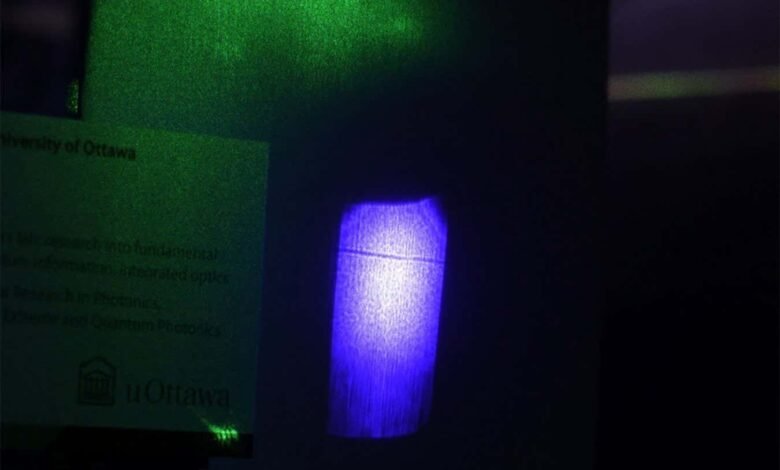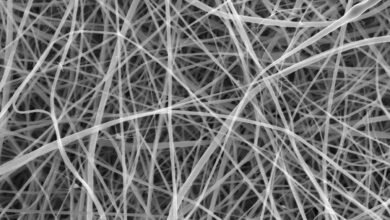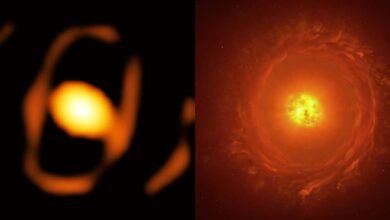Bizarre test shows light can actually cast its own shadow


The shadow of a laser beam appears as a horizontal line against the blue background
Abrahao et al. (2024)
Light normally makes other objects cast shadows – but with a little help from a ruby, a beam of laser light can cast a shadow of its own.
When two laser beams interact, they don’t clash together like lightsabers in Star Wars, says Raphael Abrahao at Brookhaven National Laboratory in New York. In real life, they will simply pass through each other. Abrahao and his colleagues, however, found a way for one laser beam to block another – and make its shadow appear.
The crucial ingredient was a ruby cube. The researchers hit this cube with a beam of green laser light while illuminating it with a blue laser from the side. As the green light passed through the ruby atoms, it changed their properties in a peculiar way that then affected how they reacted to the blue light.
Instead of letting the blue laser pass through them, the atoms affected by the green light now blocked the blue light, which created a shadow shaped exactly like the green laser beam. Remarkably, the researchers could project the blue light on a screen and see this “shadow of a laser” with the naked eye.
Abrahao says he and his colleagues had a long discussion of whether what they created really qualified as a shadow. Because it moved when they moved the green laser beam, they could see it without any special equipment and they managed to project it onto commonplace objects, like a marker, they ultimately decided in the affirmative.
Historically, understanding shadows has been crucial for understanding what light can do and how we can use it, he says, and this experiment adds an unexpected technique into scientists’ light-manipulation toolbox.
Tomás Chlouba at the University of Erlangen–Nuremberg in Germany says the experiment uses known processes to create a striking visual demonstration of how materials can help control light. The ruby’s interactions with the laser, for instance, are similar to those of materials used in laser eye surgeries, which must be able to respond to laser light by blocking it if it gets dangerously intense.
Topics:
Source link




